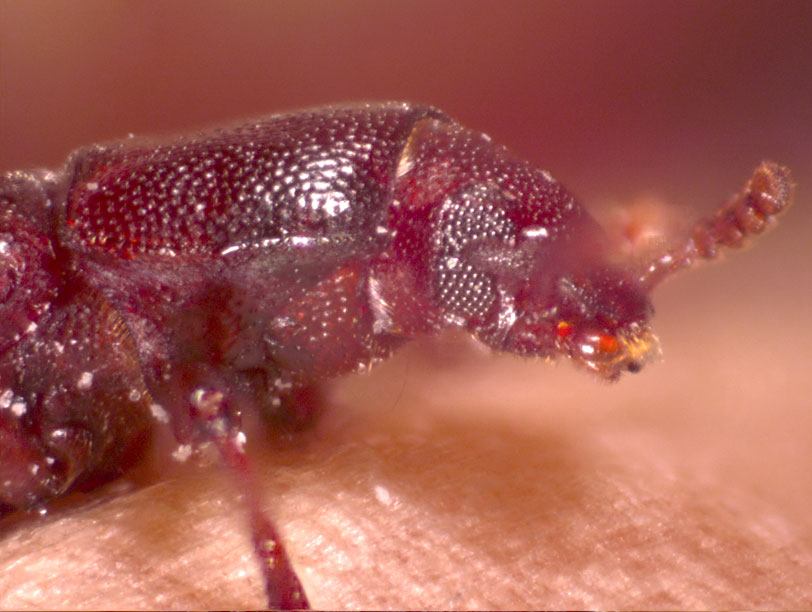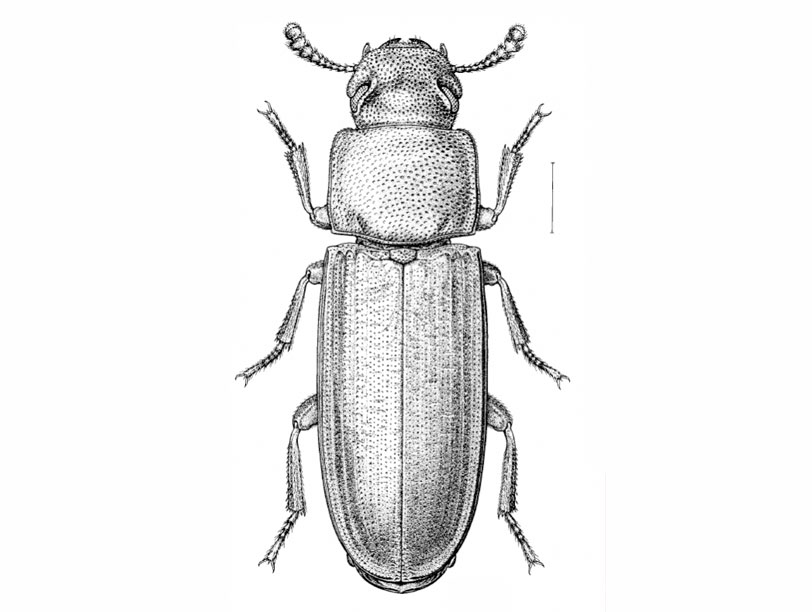Confused flour beetle
Tribolium confusum (Jaquelin du Val)
Classification
Primary pest (mills); grain feeder
Order: Coleoptera
Family: Tenebrionidae
Acronym: TCO
Description
- Adult is a small reddish-brown beetle, about 4 mm long.
- Adult is easily confused with other Tribolium species.
- Larvae are whitish with brown bands.
- Larvae reach a length of 8 mm prior to pupation.
Images
Similar species
- Red flour beetle (Tribolium castaneum)
- Black flour beetle (Tribolium madens)
- American black flour beetle (Tribolium audax)
- Broadhorned flour beetle (Gnatocerus cornutus)
- Longheaded flour beetle (Latheticus oryzae)
Commodities affected
- All type of grains, cereal products, flour, animal feed, sunflower, millet
- Starchy materials, beans, peas, spices, dried plant roots, dried, fruit, yeast, dried chocolate
- Dead insects, herbarium specimens
Signs of infestation
- Heated grain
- Pungent odour
Damage
- Is a generalist feeder, so damage is not readily attributable to this pest
- Releases a noxious secretion, when disturbed, resulting in a pungent odor in the infested commodity, rendering milled products unfit for consumption
- May cause food to acquire a pinkish tinge when a large number of insects are present
How to control
Geographic range
- Is found around the world and across Canada
- Survives Canadian winters in heated and protected places
- Is more common in warmer climates
Where found
- Is mainly found in flour and feed mills
- May also be found in warehouses, granaries, bakeries, homes and stores
- May infest packaged food
- Infests whole grain, but only feeds on dust and broken kernels
- Is typically found in grain that has become heated
Life history
- Each female lays 200 to 700 eggs loosely in food.
- Breeding takes place in a temperature range of 20oC to 37oC.
- Optimum development occurs in the range of 32oC to 35oC.
- Confused flour beetle has one of the highest rates of population growth for stored-product insects.
- The beetle is able to breed under cooler conditions than the red flour beetle.
Not what you're looking for?
Start over again from the insect identification keys page.
"Page details"
- Date modified:





